Kamehameha’s Wives
Kaʻahumanu was Kamehameha’s favorite wife. Keopuolani was the Queen Mother and the highest ranking chief of the ruling family in the kingdom during her lifetime.
These were not Kamehameha’s only wives; according to Ahlo & Walker, he had 30-wives. From them, he had 35-children from 18 of the wives (12 did not bear any children.)
Click link below for more images and information:
http://imagesofoldhawaii.com/kamehamehas-wives/
Ho‘okuleana – it’s an action word; it means, “to take responsibility.” We view it as our individual and collective responsibility to: Participate … rather than ignore; Prevent … rather than react and Preserve … rather than degrade. This is not really a program, it is an attitude we want people to share. The world is changing; let’s work together to change it for the better. (All Posts Copyright Peter T Young, © 2012, 2013, 2014, 2015, 2016, 2017 Hoʻokuleana LLC)
Sunday, May 31, 2015
Saturday, May 30, 2015
“The Kind-eyed Chief”
“The Kind-eyed Chief”
He was born April 24, 1790 to Major Catesby and Lettice Turbeville Jones at Hickory Hill in Westmoreland County, Virginia. (The ‘ap’ in his name is a Welch prefix noting he is ‘Thomas, the son of Catesby Jones.’) Jones came to the Islands and elevated the image of America.
He protested the agreement His Britannic Majesty's Consul-General, Captain Richard Charlton declared the islanders to be mere tenants at will, subjects of Great Britain. He “secured for himself among the people the designation of ‘the kind-eyed chief’ - a compliment falling on the ear of many of different classes”.
Click link below for more images and information:
http://imagesofoldhawaii.com/thomas-catesby-jones/
Click link below for more images and information:
http://imagesofoldhawaii.com/thomas-catesby-jones/
Friday, May 29, 2015
Honolulu Iron Works
Honolulu Iron Works
It was near Queen (now Ala Moana/Nimitz) and Marin/Nuʻuanu that a business using steam power for business purposes began. Honolulu Steam Flouring Company also milled wheat sent to Honolulu from the fields on Maui.
But the future of Honolulu Iron Works was not grain. As the sugar plantations flourished, machines began producing hardware for the sugar mills. By the turn of the century, the Iron Works was making complete sugar ‘factories’ for plantations.
Click link below for more images and information:
http://imagesofoldhawaii.com/honolulu-iron-works/
Click link below for more images and information:
http://imagesofoldhawaii.com/honolulu-iron-works/
Thursday, May 28, 2015
“Pele’s Grandson”
“Pele’s Grandson”
He was known as “Pele’s Grandson” or “The Runt” (he was 5’ 1” and 95-lbs.) A Cherokee, he was identified as the first tour guide at the Volcano. Alexander P Lancaster was a firm believer in Pele and her powers; he took a proprietary interest in the volcanoes – thus the nickname.
“Lancaster, probably wound up each trip into Kilauea caldera with one pocket full of tips and another full of Cuban cigars--until Jaggar put him on the Observatory's payroll as janitor, guide and general roustabout. Lancaster's experiences close to Kilauea's flowing and fountaining lava made him a good hand for Jaggar.” (Reportedly born in 1861, Lancaster died in 1930.)
Click link below for more images and information:
http://imagesofoldhawaii.com/alexander_p_lancaster/
Click link below for more images and information:
http://imagesofoldhawaii.com/alexander_p_lancaster/
Wednesday, May 27, 2015
Koʻanakoʻa
Koʻanakoʻa
The name Koʻanakoʻa literally means the settling of coral, referring to Maro’s expansive coral reefs. It is one of the Hawaiian Islands chain’s most ecologically rich shallow water marine ecosystems. It was named ’Maro’ in 1820 after the whaling ship that sighted it.
Unlike the classic ring-shaped atoll, Maro Reef is a complex maze of linear reefs that radiate out from the center like the spokes of a wheel. Maro’s reefs are intricate and reticulated (like a net or network,) forming a complex network of reef crests, patch reefs and lagoons.
Click link below for more images and information:
http://imagesofoldhawaii.com/koanakoa/
Click link below for more images and information:
http://imagesofoldhawaii.com/koanakoa/
Tuesday, May 26, 2015
Lahilahi
Lahilahi
Waiʻanae Ahupuaʻa within the Waiʻanae District was its Royal Center in the late-1600s to the 1700s. The ahupuaʻa had numerous important heiau and the largest population of the district at European contact.
Mauna Lahilahi (thin mountain – referred to by some as the ‘world’s smallest mountain’) is the palena, or boundary marker between the Makaha and Waianae ahupuaʻa (the hill itself is within the ahupuaʻa of Makaha.)
Click link below for more images and information:
http://imagesofoldhawaii.com/lahilahi/
Click link below for more images and information:
http://imagesofoldhawaii.com/lahilahi/
Monday, May 25, 2015
Memorial Day
Memorial Day
On May 5, 1866, the village of Waterloo, New York was decorated with flags at half mast, draped with evergreens and mourning black, and flowers were placed on the graves of those killed in the Civil War. It was later declared as ‘Decoration Day.’
It was not until after World War I, however, that the day was expanded to honor those who have died in all American wars. In 1971, Memorial Day was declared a national holiday by an act of Congress, though it is still often called Decoration Day.
Click link below for more images and information:
http://imagesofoldhawaii.com/memorial-day/
Click link below for more images and information:
http://imagesofoldhawaii.com/memorial-day/
Memorial Day
Memorial Day
On May 5, 1866, the village of Waterloo, New York was decorated with flags at half mast, draped with evergreens and mourning black, and flowers were placed on the graves of those killed in the Civil War. It was later declared as ‘Decoration Day.’
It was not until after World War I, however, that the day was expanded to honor those who have died in all American wars. In 1971, Memorial Day was declared a national holiday by an act of Congress, though it is still often called Decoration Day.
Click link below for more images and information:
http://imagesofoldhawaii.com/memorial-day/
Click link below for more images and information:
http://imagesofoldhawaii.com/memorial-day/
Sunday, May 24, 2015
Waikiki
Waikiki
Originally, the ahupuaʻa of Waikiki (which means “spouting waters”) included all the valleys "from the west side of Makiki valley away to the east side of Wailupe". It was a Royal Center for 400 years.
Today, Waikiki is the primary visitor destination, and hotel and resort area not just for Oʻahu, but also for all of Hawaiʻi. It is a gathering place for residents and visitors from around the world.
Click link below for more images and information:
http://imagesofoldhawaii.com/waikiki/
Click link below for more images and information:
http://imagesofoldhawaii.com/waikiki/
Saturday, May 23, 2015
Bahá’í
Bahá’í’s believe God has sent to humanity a series of divine Educators - known as Manifestations of God, whose teachings have provided the basis for the advancement of civilization – Abraham, Krishna, Zoroaster, Moses, Buddha, Jesus, Muhammad and Bahá’u’lláh.
The Hawaiian Bahá’í community is a separate administrative community from the US Bahá’í community in the worldwide Bahá’í Faith. The National Spiritual Assembly of the Bahá’ís of the Hawaiian Islands was established in 1964.
Click link below for more images and information:
http://imagesofoldhawaii.com/bahai/
Click link below for more images and information:
http://imagesofoldhawaii.com/bahai/
Friday, May 22, 2015
Gideon Laʻanui
Gideon Laʻanui
Laʻanui and Piʻia were one of the first couples to be married by Hiram Bingham. Laʻanui was also part of “a number of serious men … willing to be known as seekers of the great salvation”. He was the paramount chief of the Waialua division.
“I could not refrain from tears to see the happy meeting of this interesting pair, after their separation for so lamentable a case. His protection and restoration they both now piously ascribed to the care of Jehovah - the Christian's God.” (Bingham)
Click link below for more images and information:
http://imagesofoldhawaii.com/gideon_laanui/
Click link below for more images and information:
http://imagesofoldhawaii.com/gideon_laanui/
Gideon La'anui
Gideon La'anui
Laʻanui and Piʻia were one of the first couples to be married by Hiram Bingham. Laʻanui was also part of “a number of serious men … willing to be known as seekers of the great salvation”. He was the paramount chief of the Waialua division.
“I could not refrain from tears to see the happy meeting of this interesting pair, after their separation for so lamentable a case. His protection and restoration they both now piously ascribed to the care of Jehovah - the Christian's God.” (Bingham)
Click link below for more images and information:
http://imagesofoldhawaii.com/gideon_laanui/
Click link below for more images and information:
http://imagesofoldhawaii.com/gideon_laanui/
Thursday, May 21, 2015
Doubtful Island of the Pacific
Doubtful Island of the Pacific
By the 1850s, both Honolulu and Lahaina, on the island of Maui, had become the busiest ports for American whaling ships sailing in the Pacific Ocean. Hilo, on the Island of Hawaiʻi, was another important port. Whale oil was the main source of fuel oil for illumination. At the time, it was also the best industrial lubricant for machinery.
The Levant, an 18-gun second-class sloop-of-war, had been sent to Hawaiʻi at the request of the State Department. The disappearance of the Levant, with 210 aboard, was the second worst marine disaster in Hawaiian history. A ship’s mast drifted ashore, just below the harbor of Kawalunalu (Kaʻaluʻalu,) in Kaʻu (near Kamilo.)
Click link below for more images and information:
http://imagesofoldhawaii.com/doubtful-island-of-the-pacific/
Click link below for more images and information:
http://imagesofoldhawaii.com/doubtful-island-of-the-pacific/
Doubtful Island of the Pacific
Doubtful Island of the Pacific
By the 1850s, both Honolulu and Lahaina, on the island of Maui, had become the busiest ports for American whaling ships sailing in the Pacific Ocean. Hilo, on the Island of Hawaiʻi, was another important port. Whale oil was the main source of fuel oil for illumination. At the time, it was also the best industrial lubricant for machinery.
The Levant, an 18-gun second-class sloop-of-war, had been sent to Hawaiʻi at the request of the State Department. The disappearance of the Levant, with 210 aboard, was the second worst marine disaster in Hawaiian history. A ship’s mast drifted ashore, just below the harbor of Kawalunalu (Kaʻaluʻalu,) in Kaʻu (near Kamilo.)
Click link below for more images and information:
http://imagesofoldhawaii.com/doubtful-island-of-the-pacific/
Click link below for more images and information:
http://imagesofoldhawaii.com/doubtful-island-of-the-pacific/
Wednesday, May 20, 2015
Squirmin’ Herman
Squirmin’ Herman
Wedemeyer, born May 20, 1924 in Hilo, played football for St Louis College (now St Louis;) passing on scholarships to Notre Dame and Ohio State, he attended St Mary’s, in rural Moraga, California.
Although they lost their first game, 17-year-old Wedemeyer was “the most sensational discovery to come over the horizon since the Santa Maria... California won the ball game but Herman Wedemeyer won the hearts of every man, woman, and child present.” He later led St Mary’s to the Pacific Coast title; played in the Sugar Bowl; went Pro; then was on Hawaiʻi Five-0.
Click link below for more images and information:
http://imagesofoldhawaii.com/squirmin-herman/
Click link below for more images and information:
http://imagesofoldhawaii.com/squirmin-herman/
Squirmin’ Herman
Squirmin’ Herman
Wedemeyer, born May 20, 1924 in Hilo, played football for St Louis College (now St Louis;) passing on scholarships to Notre Dame and Ohio State, he attended St Mary’s, in rural Moraga, California.
Although they lost their first game, 17-year-old Wedemeyer was “the most sensational discovery to come over the horizon since the Santa Maria... California won the ball game but Herman Wedemeyer won the hearts of every man, woman, and child present.” He later led St Mary’s to the Pacific Coast title; played in the Sugar Bowl; went Pro; then was on Hawaiʻi Five-0.
Click link below for more images and information:
http://imagesofoldhawaii.com/squirmin-herman/
Click link below for more images and information:
http://imagesofoldhawaii.com/squirmin-herman/
Tuesday, May 19, 2015
Mahalo ʻAina
Mahalo ʻAina
Give Back to the Forest is a program of the Hawai‘i Forest Institute (an entity established in 1989 to promote healthy and productive forests and a sustainable forest industry through forest management, education, planning, information exchange and advocacy.)
The philosophy of Mahalo ʻAina is simple: to help ensure a thriving future for forest restoration and education programs. The forest provides us with environmental, economic and cultural benefits, but we must also understand that we must give back to the forest.
Click link below for more images and information:
http://imagesofoldhawaii.com/mahalo-%ca%bbaina/
Click link below for more images and information:
http://imagesofoldhawaii.com/mahalo-%ca%bbaina/
Monday, May 18, 2015
Thomas Charles Byde Rooke
Thomas Charles Byde Rooke
Rooke was born on May 18, 1806, in Bengeo, Hertford, England; he studied to be a Doctor. He first landed in the Islands at Lahaina in 1829.
He married Grace Kamaikui, the second daughter of John Young; Grace’s sister, Fanny, had a child, Emma, she was hanai (a traditional custom of adoption) to the Rookes (she became Queen Emma.)
Click link below for more images and information:
http://imagesofoldhawaii.com/thomas-charles-byde-rooke/
Click link below for more images and information:
http://imagesofoldhawaii.com/thomas-charles-byde-rooke/
Sunday, May 17, 2015
Hanai
Hanai
Hanai - To raise, rear, feed, nourish, sustain; provider, caretaker or, on a historical, practical context, “given away by birth parents to be raised by another couple.”
In ancient Hawaiʻi, and even today, the concept and practice of “hanai takes place openly among family and close friends; a child is considered the greatest of gifts.”
Click link below for more images and information:
http://imagesofoldhawaii.com/hanai-2/
Click link below for more images and information:
http://imagesofoldhawaii.com/hanai-2/
Saturday, May 16, 2015
Kuahewa
Kuahewa
Kamehameha, who had resided on Oʻahu since 1804, moved to Kamakahonu in 1812 at what is now known as Kailua on Hawaiʻi Island. Kuahewa (huge, vast) was Kamehameha’s farm situated above Kailua, (probably between the ahupuaʻa of Lanihau and Keopu.)
Kamehameha himself worked as a farmer at Kuahewa and he enacted the law that anyone who took one taro or one stalk of sugarcane must plant one cutting of the same in its place. Kuahewa was “a huge farm” located in the fern belt above Kailua Bay.
Click link below for more images and information:
http://imagesofoldhawaii.com/kuahewa/
Click link below for more images and information:
http://imagesofoldhawaii.com/kuahewa/
Friday, May 15, 2015
Vocational Training
When the missionaries established schools and seminaries (i.e. the female seminaries, as well as Lahainaluna, Hilo Boarding School, Punahou,) they included teaching of the head (‘common’ courses, the 3Rs,) heart (religious, moral) and hand (vocational training, manual labor.)
Later, shortly after the University of Hawaiʻi started (1907,) short courses or ‘special lectures’ of education of “less than college grade” were offered in agriculture as ‘extension’ work. The community college system was brought into being. It replaced the technical schools that had existed previously.
Thursday, May 14, 2015
Seacole and the Queen
Seacole and the Queen
Mary Jane Grant was born in Kingston, Jamaica in 1805. Her father was a Scottish soldier and her mother was Jamaican. Although technically ‘free,’ being of mixed race, Mary and her family had few civil rights. She married Edwin Horatio Hamilton Seacole (the godson of Admiral Horatio Nelson.)
War had been declared against Russia and following her trip to Panama, Mary had a pressing desire to go to Crimea to nurse the British soldiers. Then, Mary Seacole made a Hawaiʻi connection; Queen Emma made a brief stopover in Kingston on her way to London. Mrs Seacole placed a cloak around Her Majesty. (Seacole was voted Greatest Black Briton in 2004.)
Click link below for more images and information:
http://goo.gl/kFgNX2
http://goo.gl/kFgNX2
Wednesday, May 13, 2015
Pohaku O Lanaʻi
“It is different in character from the rocks that line the coast, and unlike anything for miles around.” Hawaiians know it as ‘pohaku lanai,’ and is said by them to have floated ashore ‘from Kahiki,’ (Tahiti.)
It is a balancing rock on a somewhat broader base, of limestone formation, with projecting top so as to afford material shelter in its shelving structure. This is said to have been used as a lookout by fishermen in the region.
Click HERE for more images and information.
Tuesday, May 12, 2015
Pulehunui
Pulehunui is an ahupuaʻa in central Maui; it extends from the rim of the crater of Haleakala, the western portion reaches to the low land of the Island and grows broader up to the western boundary joining the lands of Waikapu. During pre-contact times, agricultural uses were basically wetland or dryland.
Pulehunui does not have regular streams or springs; it is in the area known as Kula. Kula was widely famous for its sweet-potato plantations; ʻuala was the staple of life here. Here was the Maui Airport. It was later abandoned and the old runway was used for drag races and time trials starting in May 1956.
Click HERE for more images and information.
Boles Field
On August 1, 1916, President Woodrow Wilson signed the country’s 13th national park into existence – Hawaiʻi National Park (Kilauea and Mauna Loa;) eventually, Kilauea Caldera was added to the park. On-the-ground administration of the park began with the arrival of Superintendent Thomas R Boles in April 1922.
At the same time the Park was created (1916,) the military opened a rest and recreation Camp within the Park boundaries – the Kilauea Military Camp (KMC.) A military landing field called Sand Spit Horst was located just south of Halemaʻumaʻu crate; it was referred to as Kilauea Airfield. In 1925, a new Army field was under construction on the bluff between Uwekahuna and KMC (it was named for Boles.) By 1945, the airfield was determined incompatible with NPS policy.
Click HERE for more images and information.
Sunday, May 10, 2015
Kaluanui
Kaluanui is one of 23-ahupua‘a (traditional land division) that make up the district of Koʻolauloa on the island of O‘ahu It extends from the sea to the summit (approximate 2,700-foot elevation) and contains approximately 1,650 acres of land. Kaluanui is perhaps best known for this deep valley and steep cliffs which form the waterfall of Kaliuwaʻa.
It was called Sacred Ravine, then Sacred Valley, and it wasn’t until the 1950s that the name Sacred Falls appeared in the literature. On May 9, 1999 (Mother’s Day,) portions of the sheer rock face fell, killing 8 and injuring 50. The former State Park has been closed since then.
Click HERE for more images and information.
Saturday, May 9, 2015
The First School
After the Pioneer Company of missionaries landed at Kailua-Kona,
Hiram and Sybil Bingham sailed for Honolulu and arrived April 19, 1820. It is said that Sybil started the first
school in Hawaiʻi in May 1820.
Sybil’s June 20, 1820 journal entry notes, “After neglect of
my journal for more than two months in a most interesting part of our history
too … Very soon I gathered up 12 or 15 little native girls to come once a day
to the house …. That was an interesting day to me to lay the foundation of the
first school ever assembled in this dark land.”
Friday, May 8, 2015
Pualani Mossman
“They say she is the most photographed girl in the Islands ...” Pualani Mossman was born on April 16, 1916 in Honolulu. In 1934, Mossman was tapped by the Hawaiʻi Tourist Bureau to star in the first color movie made in Hawaiʻi, intended to promote tourism.
She became known as the “Matson Girl,” appearing in Life, Time and Fortune magazines. For more than 50 years, Pualani Mossman epitomized the image of a Hawaiian hula dancer as the original poster girl for Matson cruises and the Hawaii Visitors Bureau.
Click HERE for more images and information.
Thursday, May 7, 2015
EK Fernandez Shows
By the end of World War II, Eddie (Edwin Kane ‘EK’ Fernandez,) was being called “the Barnum of the Pacific.” He produced Honolulu’s first circus, imported Hawai‘i’s first ice show, first bullfight, first boxing match and first rodeo.
EK Fernandez Shows “crossed the Pacific with tents, elephants and ice-making equipment to transport entertainment to Guam, Tokyo, Manila, Hong Kong, Singapore, Java and Shanghai.”
Click HERE for more images and information.
Wednesday, May 6, 2015
Hilo Coastal Defense
A key goal in the Pacific was to hold Oʻahu Island as a main outlying naval base and to protect shipping in the waters around the Hawaiian Islands. The War Department looked to much larger reinforcement of Hawaiʻi; this led to plans for garrisoning the other islands of the Hawaiian group. And, Hilo was a natural choice.
In 1908, construction began on the Hilo Bay breakwater along the shallow reef; piers were built and extended by 1927. A mobile field battery of 155-mm guns was set up in December 1941. Four 4-inch naval guns were later emplaced in 1942. The Hilo battery was abandoned in 1945. The exact locations are undetermined.
Click HERE for more images and information.
Tuesday, May 5, 2015
Chiefess Kapiʻolani
Kapiʻolani was one or the most distinguished of the female chiefs of the Islands. In 1822, Kapiʻolani and Naihe (her husband) were among the first chiefs to accept Christianity. Ever since missionaries arrived (1820,) Kapiʻolani has constantly been situated near them, and for nearly two years has listened to the words of eternal life in her own language.
She won the cause of Christianity by openly defying the priests of the fire goddess Pele in 1825. She clambered down to the great lake of fire - Kilauea - the home of the goddess, and flung into the boiling lava the consecrated ohelo berries which it was sacrilege for a woman to handle.
Click HERE for the full post and additional images.
Monday, May 4, 2015
Academy of the Sacred Hearts
King Kamehameha III donated land for the first permanent Catholic Church; it was named the Cathedral of Our Lady of Peace (it’s the oldest Roman Catholic Cathedral in continuous use in the US.)
On May 4, 1859 the Sisters of the Congregation of the Sacred Hearts of Jesus and Mary and the Perpetual Adoration of the Blessed Sacrament arrived at Honolulu; shortly after, they opened the Sacred Hearts Convent. In 1909, a Catholic secondary school for women was started in Kaimuki, Academy of the Sacred Hearts.
Click HERE for the full post and more images.
Sunday, May 3, 2015
Declaration of War
It starts with the delivery of a simple package … two ʻulu
maika stones wrapped in kapa. It was an
offer, and a threat - white and black stones.
The recipient was asked to make a choice.
The white stone signified peace and not war; the black stone
was a symbol of war between the one who sent it and the one to whom it was
sent. Return the white stone for peace,
the black stone for war.
Saturday, May 2, 2015
Waikahalulu Falls
The Pan-Pacific conference called for a meeting in Hawaiʻi, the establishment of a Pan-Pacific commercial college in Honolulu and the project of a Pan-Pacific peace exposition.
Folks selected a site along the Nuʻuanu Stream, in the heart of Honolulu, near two waterfalls, as the nucleus of a Pan-Pacific Park; here all resident races of the Pacific might re-create their national life and customs. Ultimately, it never happened; it is now Liliʻuokalani Gardens.
Click HERE for more images and information.
Friday, May 1, 2015
May Day
May Day is Lei Day in Hawaiʻi. When you give a lei, you are giving a part of you. Likewise, as you receive a lei, you are receiving a part of the creator of the lei.
The first Lei Day was in 1927 and celebrated in downtown Honolulu with a few people wearing lei. From that it grew and more and more people began to wear lei on May 1. In 1929, Governor Farrington signed a Lei Day proclamation.
Click HERE for the full post.
Subscribe to:
Posts (Atom)
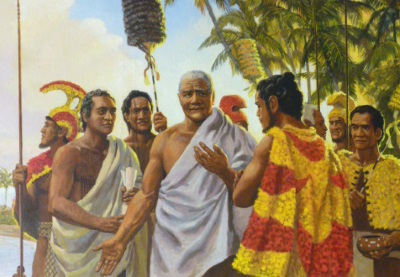
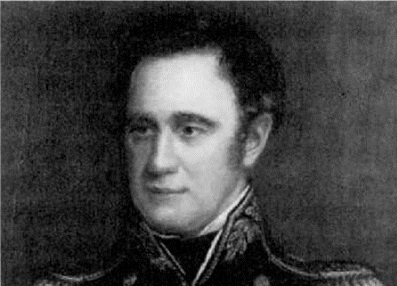
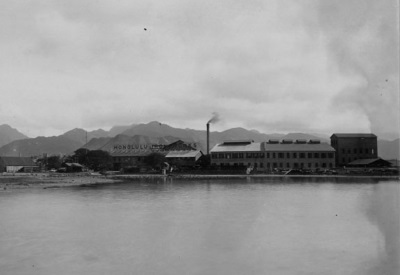

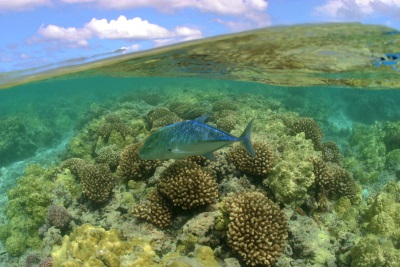
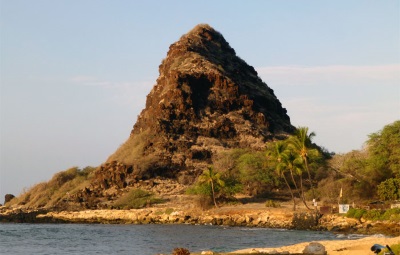



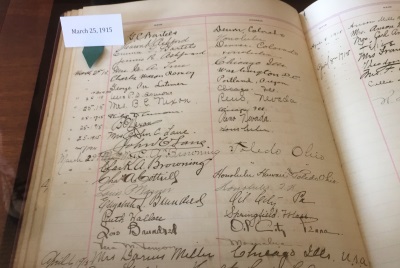









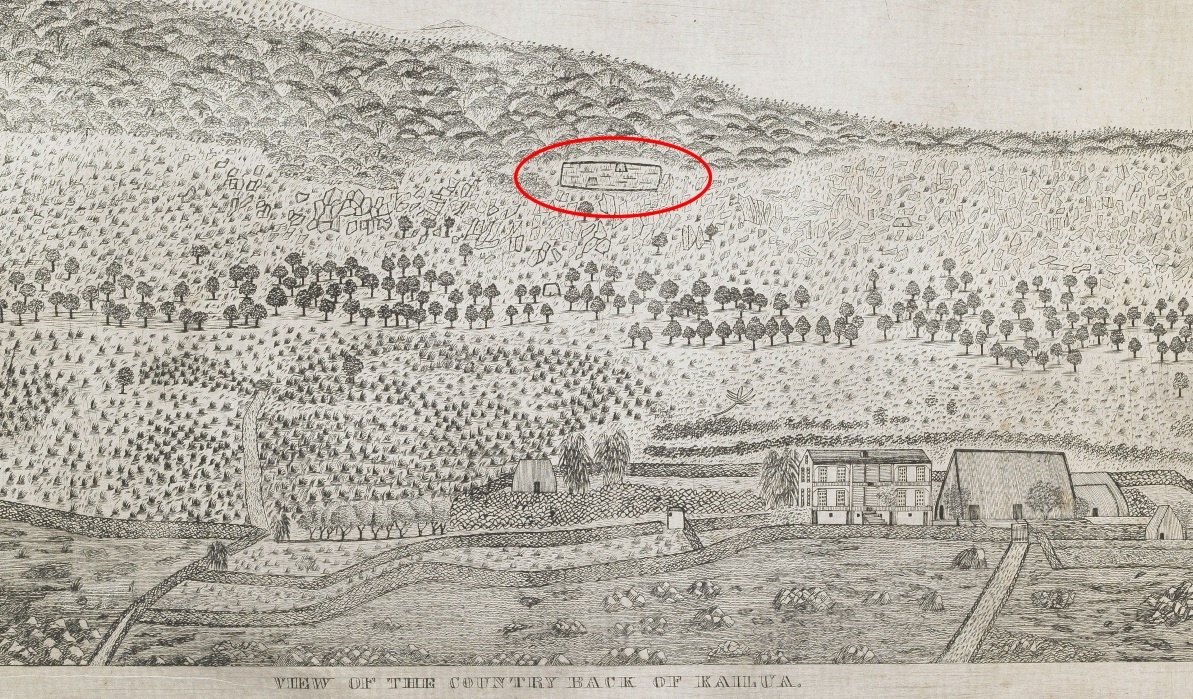

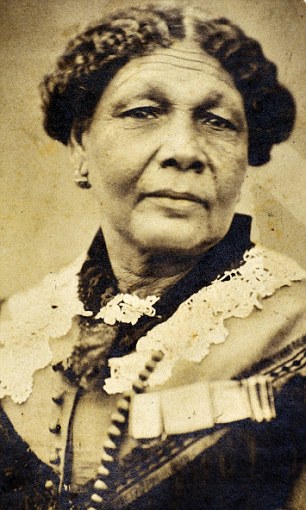


-1923.jpg)





.jpg)

.jpg)

